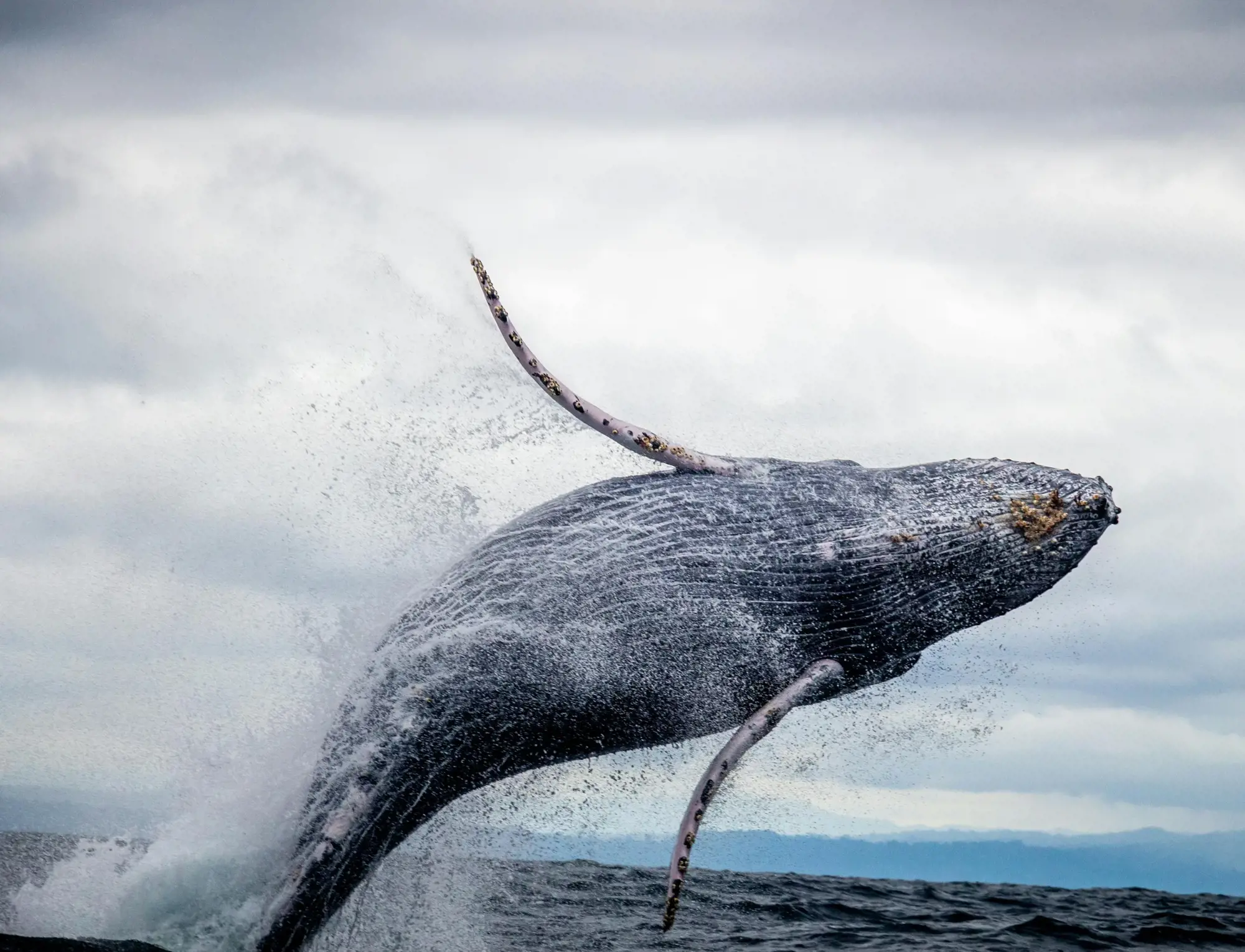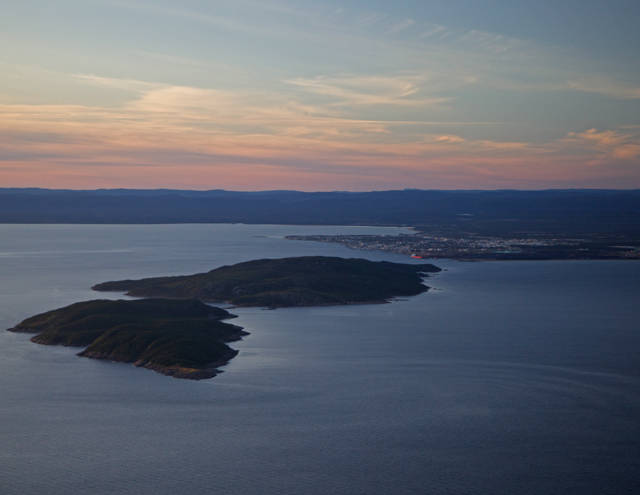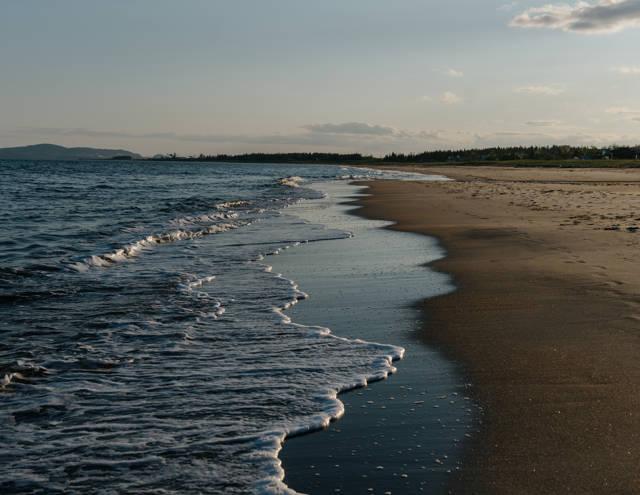Whale Watching in Sept-Îles: Québec’s Most Authentic Marine Experience
Whales have fascinated humankind since the dawn of time. Symbols of power, freedom, and mystery, these giants of the sea attract thousands of visitors every year who hope to glimpse them in their natural habitat. In Québec, several places offer this unique opportunity, but few can match the magic of whale watching in Sept-Îles.
Here, on the majestic Côte-Nord, nature reveals itself in its purest form. Between the deep blue of the Gulf of St. Lawrence and the seven islands that make up its iconic archipelago, Sept-Îles offers a privileged encounter with these spectacular marine creatures, in a setting that’s both wild, peaceful, and wonderfully preserved.
Whale Watching from Shore in Sept-Îles
In Sept-Îles, you don’t need to board a boat to experience the magic of whale watching. Nature comes directly to you, right from the shoreline. Thanks to the unique geography of the bay and the richness of the Gulf of St. Lawrence, it’s common to spot the misty spouts of whales while keeping your feet on solid ground.The best time to see whales in Sept-Îles runs from June to October, when the waters are richest and the sea conditions ideal.
Wharfs, beaches, and coastal lookouts all offer excellent viewing spots. The Vieux-Quai often provides breathtaking views of whales offshore, while the beaches of the archipelago showcase sweeping vistas where sea and sky merge into one. On calm days, the powerful breath of a whale is easy to spot on the horizon, and it’s not unusual to see a fin emerge between the waves.This accessibility makes whale watching in Sept-Îles truly unique in Québec: no cruise, no special gear, just patience, a keen eye, and the promise of an unforgettable experience on the Côte-Nord.
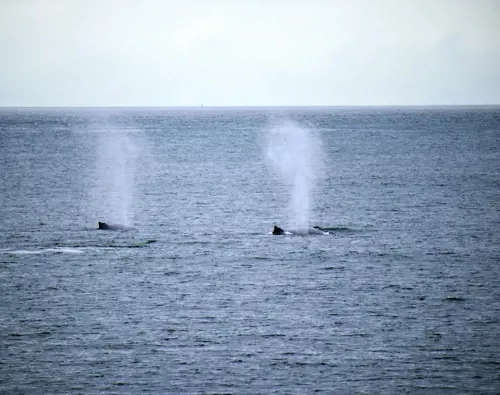
Why Whales Choose Sept-Îles
It’s no coincidence that whales love the waters of Sept-Îles. The Gulf of St. Lawrence is a natural haven for marine life. The cold, nutrient-rich currents that flow along the Côte-Nord attract massive swarms of krill and small fish, a true feast for cetaceans.
These ideal conditions make Sept-Îles one of the most important feeding grounds for whales in the northwest Atlantic.
Every summer, several species come to feed here: the humpback whale, known for its acrobatic jumps and melodic songs; the fin whale, the second-largest animal on Earth; the curious and coastal minke whale; and, on rare occasions, the blue whale, the largest living creature on the planet.
The show often unfolds just a few kilometres from shore, offering visitors a rare proximity and an intimate connection with nature.
Discover Sept-Îles: A Natural Gem on the Côte-Nord
Sept-Îles is far more than a whale-watching destination. It’s a land of contrast and raw beauty. The Sept-Îles Archipelago, made up of seven islands (Grande Basque, Petite Basque, Corossol, Manowin, Grosse Boule, Petite Boule, and De Quen), forms a true natural sanctuary. Each island has its own character, from wild beaches and cliffs to maritime forests and breathtaking viewpoints over the Gulf.
After a day of whale watching, visitors can explore the trails of the region, or simply admire the sunset from the Vieux-Quai. This blend of adventure and serenity makes Sept-Îles a complete destination, where you can experience both the thrill of the sea and the peaceful rhythm of coastal life.
Sept-Îles or Tadoussac: Which Whale-Watching Destination to Choose?
Tadoussac is often called Québec’s whale-watching capital, but for travellers seeking a more authentic, uncrowded experience, Sept-Îles is a true hidden gem.Here, the pace is slower, the atmosphere more intimate, and the encounters more genuine. Whales often venture closer to the shore, allowing for spectacular sightings even without a boat. The excursions take place in a wilder, more natural setting, where you can still feel the heartbeat of the river.
Choosing Sept-Îles means choosing authenticity, closeness to nature, and serenity, while enjoying an ecosystem as rich, if not richer, than Tadoussac’s.
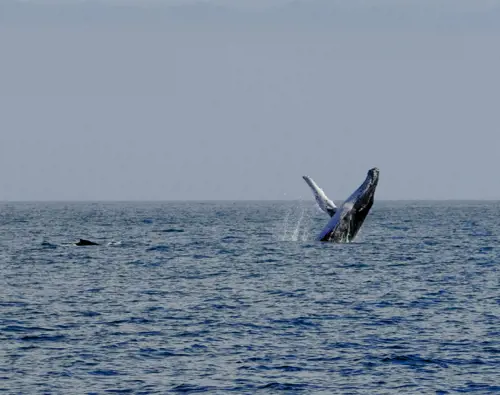
Whale watching in Sept-Îles is much more than a tourist activity, it’s a sensory, emotional, and deeply human experience.
Between majestic marine life, the untamed beauty of the Côte-Nord, and the warm hospitality of its people, every moment spent here reconnects you with what truly matters.
So, if you’re wondering where to see whales in Québec, choose Sept-Îles, a rare meeting point between sea, nature, and wonder.
FAQ – Everything You Need to Know About Whale Watching in Sept-Îles
When is the best season to see whales in Sept-Îles?
From June to October, several species such as humpback whales, fin whales, and blue whales can be seen feeding in the nutrient-rich waters of the Gulf of St. Lawrence.
Where can you watch whales in Sept-Îles?
Some of the best coastal viewpoints include the Vieux-Quai and La Réserve, where you can often spot whales directly from shore.
What species of whales can be seen?
The most common are humpback whales and fin whales, but minke whales and occasionally blue whales also make appearances.
Why choose Sept-Îles instead of Tadoussac?
Because Sept-Îles offers a quieter, more natural, and more intimate experience, far from the crowds of mass tourism — with whale sightings often just as spectacular.
Can whales be seen all year long?
Whale presence varies by season, with summer being the most active period. Outside of whale season, Sept-Îles offers plenty of other marine and cultural activities to enjoy.
Where to stay for whale watching in Sept-Îles?
For the best experience, Hôtels Gouverneur Sept-Îles is the ideal address. Located near the port and the Vieux-Quai, where whales can often be seen from shore, the hotel combines comfort and convenience just minutes from the sea — the perfect starting point to explore the Côte-Nord and experience the magic of Sept-Îles.




